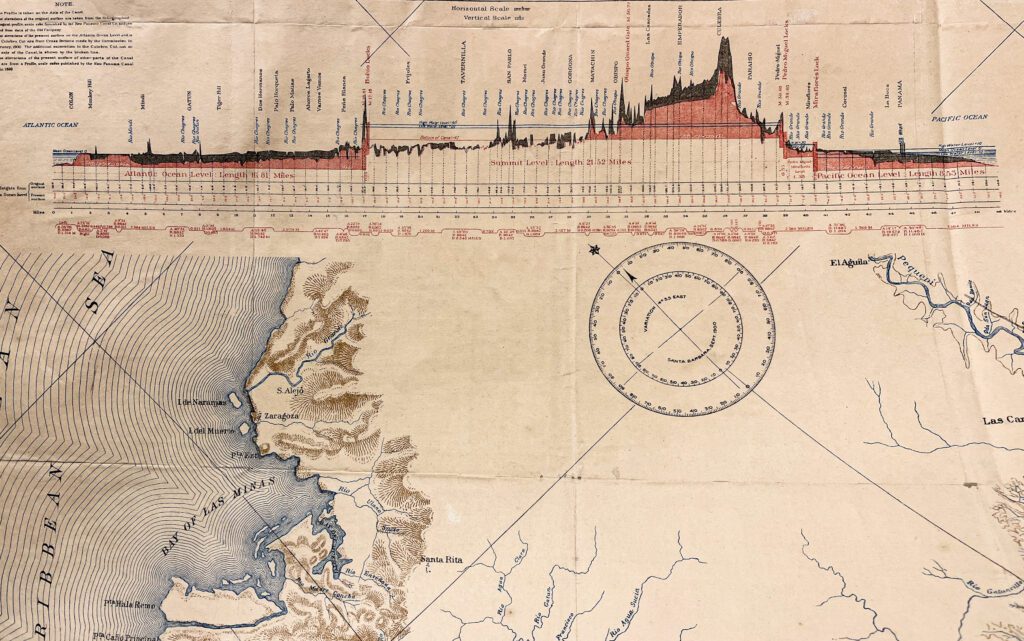

as Recommended by the Isthmian Canal Commission of 1899-1902
National Geographic Magazine, 1905, 1: 100,000
Hi everyone,
Hope you all are doing well! The Panama Canal is one of the greatest engineering projects in world history. Since its completion in 1914, the canal has served a vital role in global transport by allowing ships traveling between the Atlantic and Pacific Oceans to directly traverse the Panamanian Isthmus instead of taking the lengthy Cape Horn route rounding South America. Published in 1905, this “Map Showing Location of Panama Canal” shows the design plan of the Panama Canal and probably functions to explain this recently started project to U.S. readers.
The idea of building a canal across the Panamanian Isthmus has long been proposed and was first put into practice in 1881 by the French. The initial plan was to envisage a sea-level canal; however, the French project failed in 1894 due to technical problems and the high worker mortality rate. In 1904, the construction of a raised canal project was initiated by the Americans. The development of the lock system allows the ships to be lifted to a height of 85 feet above sea level and later brought down on the other side of the canal. The whole project cost the U.S. government $375 million, equivalent to $ 9 billion today.
This topographic map shows the Isthmus of Panama with the canal and railway constructions marked out in red and black lines. At the two ends of the canal, the ocean depths around the two bays are labeled out. Relief is shown by contours and hachures. The upper left image shows the profile of the canal: the present surface is marked by red whereas the original natural relief is shaded by black lines.
The Panama Canal still serves to be one of the world’s most critical transports today. Around 13,000 to 14,000 ships go through this canal every year. Attached below is another National Geographic map entitled “Birds-eye View of the Panama Canal” (produced in 1912) that shows the magnificence of the project.
Have a wonderful week!
Yidan Xu ’24